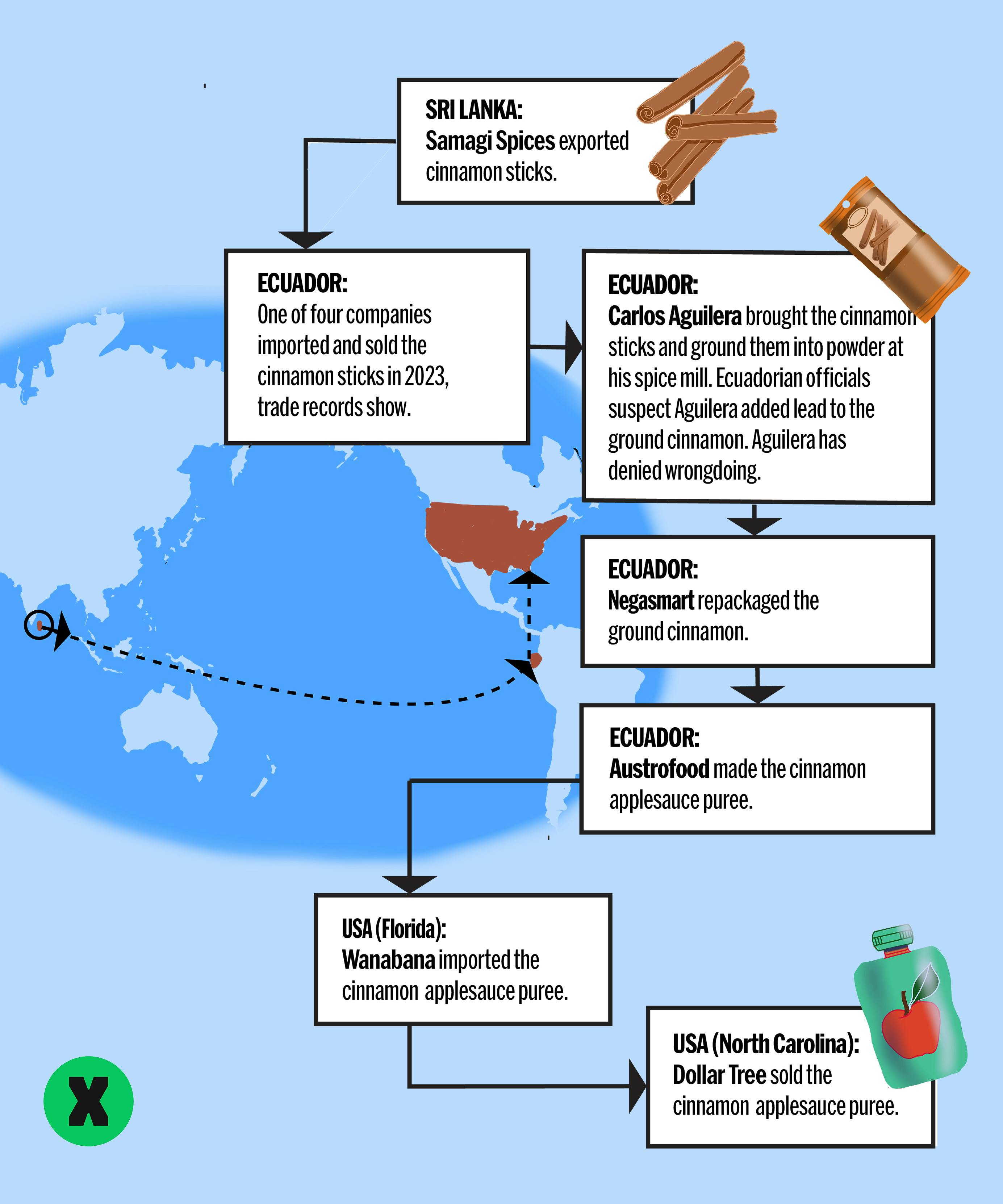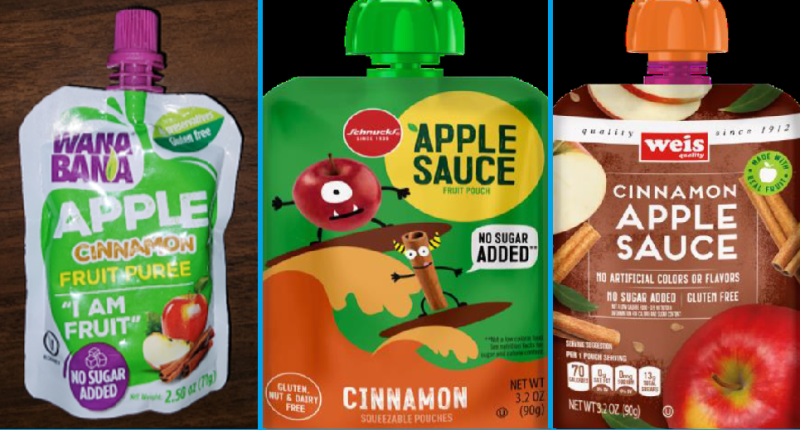Over Christmas, I was at the home of my partner’s family in St. Louis, Missouri. As we baked cookies with the kids, conversation among adults turned to recent news: the recall of cinnamon applesauce pouches from the city’s biggest chain of supermarkets.
Weeks earlier, the U.S. Food and Drug Administration had announced the discovery of astronomically high lead levels in applesauce pouches, millions of which had been sold nationwide. Hundreds of children have reportedly been sickened in one of the worst baby food scandals in decades.
I’ve been reporting on dangerous lead contamination since last year for The Examination, but my interest in lead dates back even longer. Not just any kind of lead – but the type that people and corporations add to candy, cheese, cake and spices to increase color, weight and, ultimately, profit.
For years, I’ve compiled databases, scientific studies, and news on the subject, from food markets in Libya, to pregnant women in Bangladesh, children in the Republic of Georgia and police raids last year at a turmeric factory in Pakistan.
In the United States, local health officials and academics have long sounded the alarm in studies from New York City, to Nevada, to Boston to Wake County, North Carolina.
Scandals like tainted applesauce might grab the headlines every now and again, but they don’t reflect just how common lead poisoning remains worldwide.
So when the tainted applesauce story broke late last year, I wanted to dig deeper.
Tracing lead contamination across borders
No level of lead is safe and the impacts on children can be devastating, including developmental delays, and brain damage. It’s not just children: recent studies show that even tiny increases in lead in the blood of pregnant women can drastically increase the chance of premature births.
At the same time, lead poisoning can be overlooked. Its effects can be hard to see and, in some countries where lead has been banned in paint and gasoline, slow-moving lead poisoning can take a back seat to tropical diseases and more novel crises, like COVID-19.
In December, the FDA said it suspected someone may have deliberately added lead to cinnamon. But whatever else the FDA knew, if anything, it wasn’t saying at the time.
Given the journey of the cinnamon – from Sri Lanka via Ecuador to the United States – it seemed obvious that a team of international journalists could help. I spoke to a reporter in Sri Lanka with experience in the spice industry. Three food inspectors there told me they had never seen lead in cinnamon (although they had stories of other dangerous additives).
In Ecuador, I teamed up with reporter Paúl Mena Mena at El Universo newspaper. Within days of us joining forces, he obtained hundreds of pages of internal government records, detailing how the Latin American country responded to the applesauce recall. In dozens of inspection reports from factories involved in importing, grinding and packaging cinnamon, records revealed a country under-prepared to deal with what had happened. (If you want to read a blow-by-blow account of the situation in Ecuador, Paul’s recent reporting for El Universo is invaluable.)

In the United States, I teamed up with Christina Jewett, the lead reporter at The New York Times covering the FDA, the overstretched U.S. agency charged with protecting much of the nation’s food supply. Christina quickly honed in on one key loophole that helped explain what had gone wrong with the applesauce: rules for importers of foreign food. Through public records, interviews with experts and days scouring decade-old legislative archives, we ultimately found how the U.S. food safety system essentially relies upon the industry to police itself.
Christina spoke with one family in North Carolina whose children saw the levels of lead in their blood spike after eating applesauce bought from a dollar store. The family’s persistent questioning ultimately sparked the nationwide recall.
Subscribe to our newsletter
Global health reporting, straight to your inbox
International trade data, compiled by Import Genius, a U.S.-based trade data aggregator, helped us trace shipments of cinnamon into Ecuador and then follow the applesauce into ports in Maryland and Florida.
I was surprised to learn that while the FDA long ago set a limit on lead in candies or sweets, it has no such guidance on spices, despite the role of turmeric, cinnamon, chili and other products in the daily diet of many Americans, especially those in immigrant communities.
More scrutiny needed
Our story is the most detailed accounting to-date about the spice route from the leopard-filled forests of Sri Lanka to the supermarket shelves of St. Louis.
Yet the mystery remains unsolved. U.S. officials say they are limited in what they can do. Authorities in Ecuador are still testing cinnamon and told us they have no smoking gun – no tainted cinnamon was found on the premises of the man Ecuador says is the most likely culprit.
Lawsuits and legal challenges in the United States and in Ecuador might shine more light in the months to come.
In the United States, there is a broader push for Congress to act, including calls for more FDA funding.
In the absence of federal action, some states are calling for their own revolution.
Regulators in New York, which leads the nation in research on adulterated spices, called for a nationwide repository of data about lead in consumer products last year. A database exists to monitor lead exposure for workers, regulators noted, but not for children poisoned in other ways.
“Without a national dataset of lead-containing consumer products … an understanding of the magnitude of this issue will remain fragmented, leaving us to wonder, “Is this a problem in the rest of the United States?” officials wrote.
In some ways, warnings from the past remain as valid as ever.
In 1820, German chemist Frederik Accum published a landmark study on lead in food, warning that manufacturers were adding the heavy metal to increase profits. Accum urged governments to take action against the people and companies involved.
“'The man who robs a fellow subject of a few shillings on the highway is sentenced to death”, Accum wrote. “But he who distributes a slow poison to the whole community escapes unpunished.”

